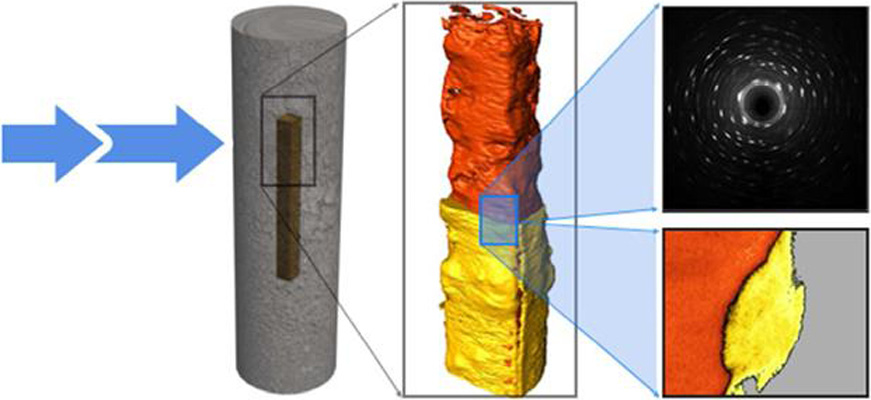Nuclear waste viewed in a new light; a synchrotron study of uranium encapsulated in grout
How do you characterise the contents of a sealed nuclear waste package without breaking it open?

This question is important when the contained corrosion products are potentially reactive with air and radioactive. Synchrotron X-rays have been used to perform micro-scale in-situ observation and characterisation of uranium encapsulated in grout; a simulation for a typical intermediate level waste storage packet. X-ray tomography and X-ray powder diffraction generated both qualitative and quantitative data from a grout-encapsulated uranium sample before, and after, deliberately constrained H2 corrosion.
Tomographic reconstructions provided a means of assessing the extent, rates and character of the corrosion reactions by comparing the relative densities between the materials and the volume of reaction products. The oxidation of uranium in grout was found to follow the anoxic U+H2O oxidation regime,
and the pore network within the grout was observed to influence the growth of uranium hydride sites across the metal surface. Powder diffraction analysis identified the corrosion products as UO2 and UH3, and permitted measurement of corrosion-induced strain. Together, X-ray tomography and diffraction provide means of accurately determining the types and extent of uranium corrosion occurring, thereby offering a future tool for isolating and studying the reactions occurring in real full-scale waste package systems.